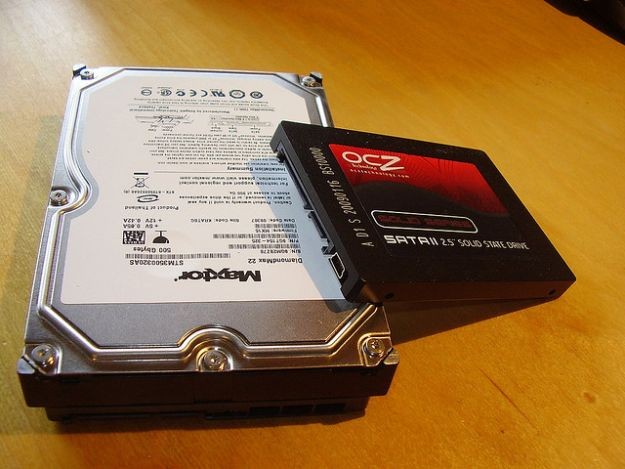Solid-state drives vs. hard disk drives
Page 1 of 1
 Solid-state drives vs. hard disk drives
Solid-state drives vs. hard disk drives
Solid-state drives vs. hard disk drives

You’ve probably been wondering what all the hype is when it comes to solid-state drives – not to mention what the heck they are exactly. These magnificent devices could make you love your computer more than you ever thought possible, especially if you’re the impatient type. Solid-state drives not only significantly reduce boot times and make your system feel much quicker, they also make app launching and file copying lightning fast.
If the thought of having a snappier machine sounds appealing, read on to learn more about one of the coolest developments in computing.
Solid-state drives vs. hard disk drives
Installing a solid-state drive (SSD), also known as a solid-state disk, into your machine can radically ramp up its speed and reliability. What makes an SSD superior to a regular hard disk drive (HDD) is its memory. In an HDD, there are constantly spinning discs that read and write data magnetically. In an SSD, however, the memory doesn’t move. SSDs, instead, use a motionless technology called NAND flash memory to read and write. Notably, a computer takes a lot less time to hunt and gather data from an SSD because it’s able to find data just as quickly, no matter where it is in the memory. Meanwhile, a machine must search everywhere in an HDD to find a specific block of information, as the data block’s fragments may be spread across different locations. In fact, an SSD purposefully stores data in different spots to cleverly avoid wear and tear – but this never affects efficiency.
Another way to use an SSD is as an external hard drive, merely to store your data. Of course, this option would not optimize your computer’s performance in any way.
Source: Natalia Real — December 16, 2012

You’ve probably been wondering what all the hype is when it comes to solid-state drives – not to mention what the heck they are exactly. These magnificent devices could make you love your computer more than you ever thought possible, especially if you’re the impatient type. Solid-state drives not only significantly reduce boot times and make your system feel much quicker, they also make app launching and file copying lightning fast.
If the thought of having a snappier machine sounds appealing, read on to learn more about one of the coolest developments in computing.
Solid-state drives vs. hard disk drives
Installing a solid-state drive (SSD), also known as a solid-state disk, into your machine can radically ramp up its speed and reliability. What makes an SSD superior to a regular hard disk drive (HDD) is its memory. In an HDD, there are constantly spinning discs that read and write data magnetically. In an SSD, however, the memory doesn’t move. SSDs, instead, use a motionless technology called NAND flash memory to read and write. Notably, a computer takes a lot less time to hunt and gather data from an SSD because it’s able to find data just as quickly, no matter where it is in the memory. Meanwhile, a machine must search everywhere in an HDD to find a specific block of information, as the data block’s fragments may be spread across different locations. In fact, an SSD purposefully stores data in different spots to cleverly avoid wear and tear – but this never affects efficiency.
Another way to use an SSD is as an external hard drive, merely to store your data. Of course, this option would not optimize your computer’s performance in any way.
Source: Natalia Real — December 16, 2012
Page 1 of 1
Permissions in this forum:
You cannot reply to topics in this forum